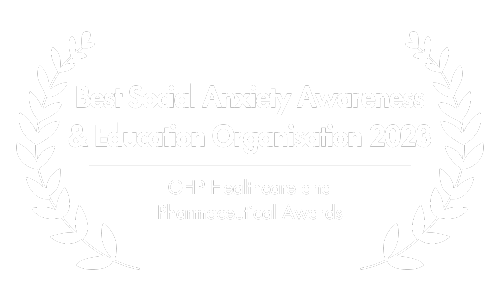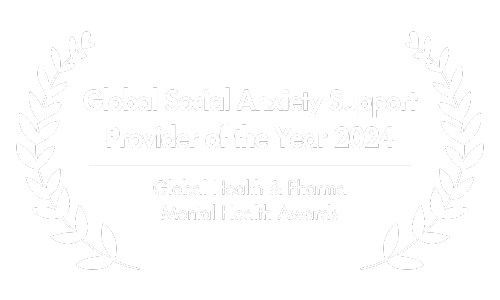Social Anxiety Diagnosis
Diagnoses of mental health conditions, such as social anxiety disorder (SAD), are regulated by diagnostic manuals.
These manuals help clinicians identify and distinguish between different conditions, whose symptoms often overlap and can be somewhat alike.
For example, the occurrence of panic attacks in a patient can point towards the diagnosis of panic disorder.
However, when examining the underlying fear of these panic attacks, the clinician may conclude that the patient is not concerned about their health, but about being seen as weak and being judged because of it.
In this case, the diagnosis of social anxiety disorder (also: social phobia) may be more likely.
In this comprehensive guide, we summarize the exact diagnostic criteria for SAD and help you get an idea of your current situation.
As you will see, an official diagnosis can only be made by a qualified professional. You will need to consult with your physician, psychiatrist, or psychologist in person to be diagnosed.
With that said, let’s dive into it.
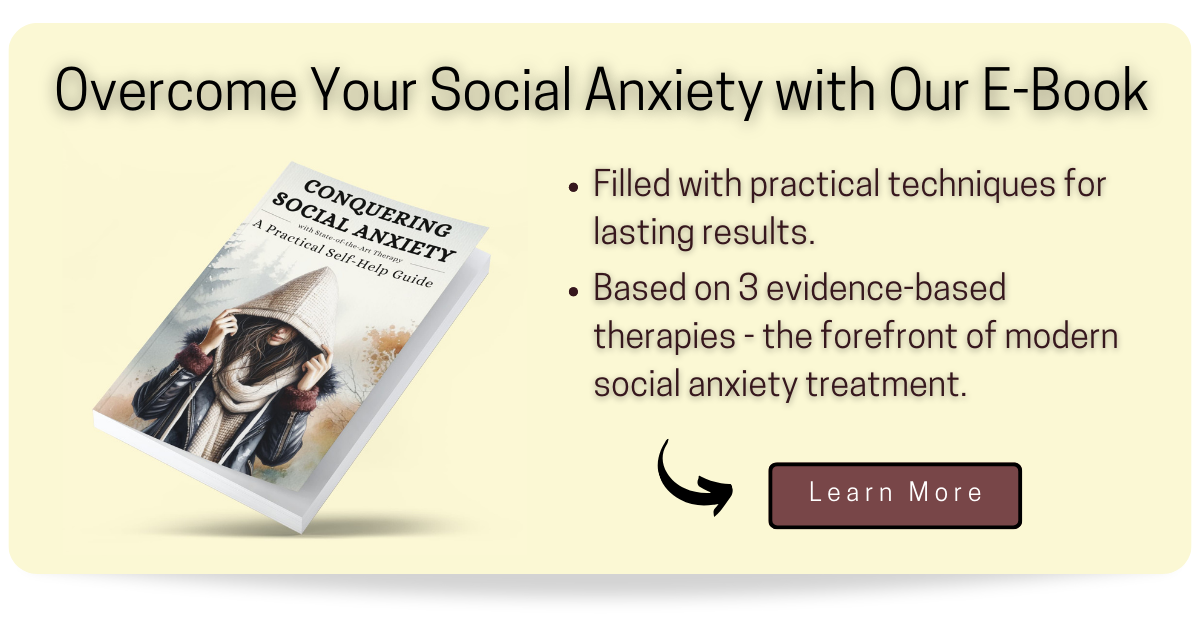
How Is Social Anxiety Diagnosed?
Typically, social anxiety disorder is diagnosed by psychiatrists, licensed psychologists or regular physicians. They examine the patient’s medical history, check for prevailing symptoms and verify whether or not they meet the diagnostic criteria established by an official diagnostic manual.
Depending on your country of residence and the mental health care facility or professional you reach out to, the manual used to diagnose your SAD can vary.
There are two major manuals that are used to diagnose mental health conditions: The Diagnostic and Statistical Manual of Mental Disorders (DSM) and the International Classification of Diseases (ICD).
A third option, the Operationalized Psychodynamic Diagnosis (OPD) manual, is sometimes used by professionals who have a psychodynamic background. Instead of focusing exclusively on the patient’s symptoms, it aims to measure the variables of psychodynamic theory and establish scientifically acceptable diagnoses for this therapeutic approach.
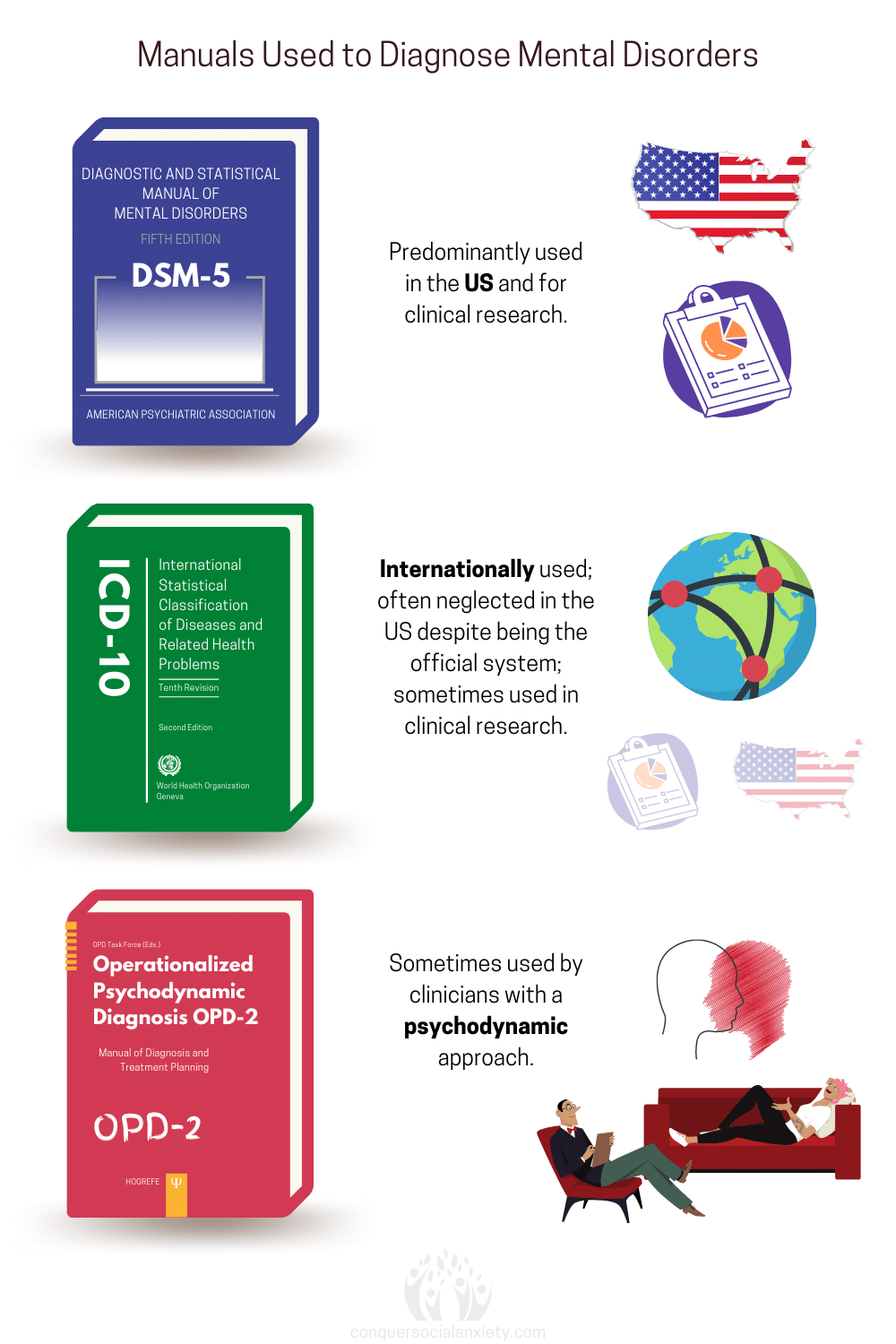
Although their clinical utility has been questioned, these manuals can help with (American Psychiatric Association, 2013):
- identifying the factors that cause and maintain a person’s discomfort and suffering;
- backing up the diagnosis with a solid scientific knowledge base;
- choosing the most effective and comprehensive treatment and intervention;
- more transparent treatment processes;
- defining the severity of the disorder (for example, the DSM-5 distinguishes between mild, moderate, severe and extreme).
What Are Diagnostic Criteria?
Diagnostic criteria are the particular descriptions of an illness or disorder. They are based on scientific studies and generalize the signs and symptoms that are typical for a specific condition. Among others, they take into account cultural, emotional, cognitive and behavioral contexts.
For example, let’s say that 2000 socially anxious people are studied and 98% of them present an irrational fear when being exposed to potential public scrutiny.
This fear would be seen as a symptom and is then generalized, standardized, tested for reliability and established as diagnostic criteria for SAD. Like this, a checklist of various symptoms and specifications can be created.
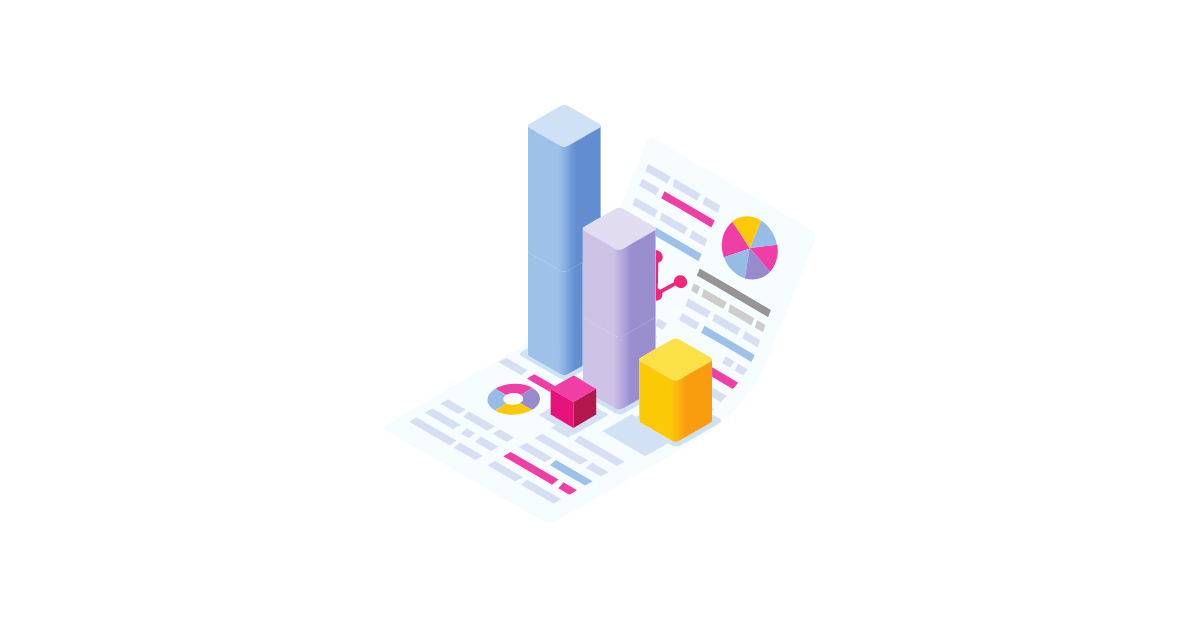
Let’s have a look the diagnostic criteria from each of these manuals. This will give you a good idea of whether or not you are affected by SAD.
DSM-V Diagnostic Criteria for Social Anxiety Disorder
The Diagnostic and Statistical Manual of Mental Disorders (DSM) is published by the American Psychiatric Association (APA) and is revised and updated every few years.
If you live in the United States, it is likely that this manual will be used to diagnose your social anxiety disorder. Even if you live elsewhere, your clinician may be inclined to use it.
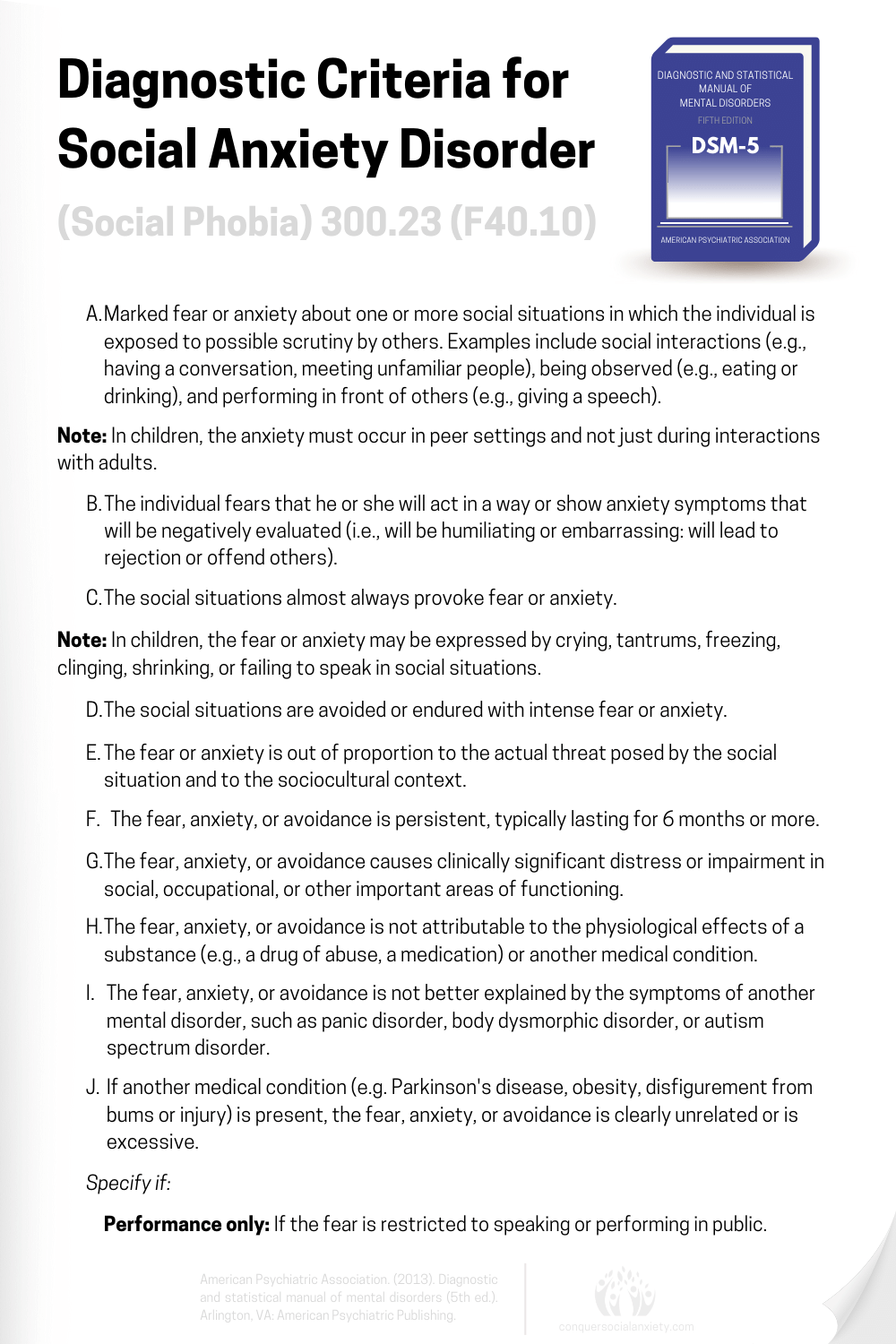
Regarding the specifier for performance only, the DSM-5 points out:
“Individuals with the performance only type of social anxiety disorder have performance fears that are typically most impairing in their professional lives (e.g., musicians, dancers, performers, athletes) or in roles that require regular public speaking. Performance fears may also manifest in work, school, or academic settings in which regular public presentations are required. Individuals with performance only social anxiety disorder do not fear or avoid nonperformance social situations.”
Next, let’s have a look at the diagnostic criteria of the ICD-10.

ICD-10 Diagnostic Criteria for Social Phobia
Unlike the DSM, the International Classification of Diseases (ICD) manual covers not only mental illnesses, but all types of diseases.
It is published by the World Health Organization (WHO) and is used on a global scale. This allows for the tracking of disease specific prevalences (How many people are affected at a given moment? How many people suffer from it at some point in their lives?).
Contrary to the DSM, psychiatric conditions are not referred to as disorders, but as diseases. As you will see, the ICD-10 does not diagnose social anxiety disorder, but social phobia.
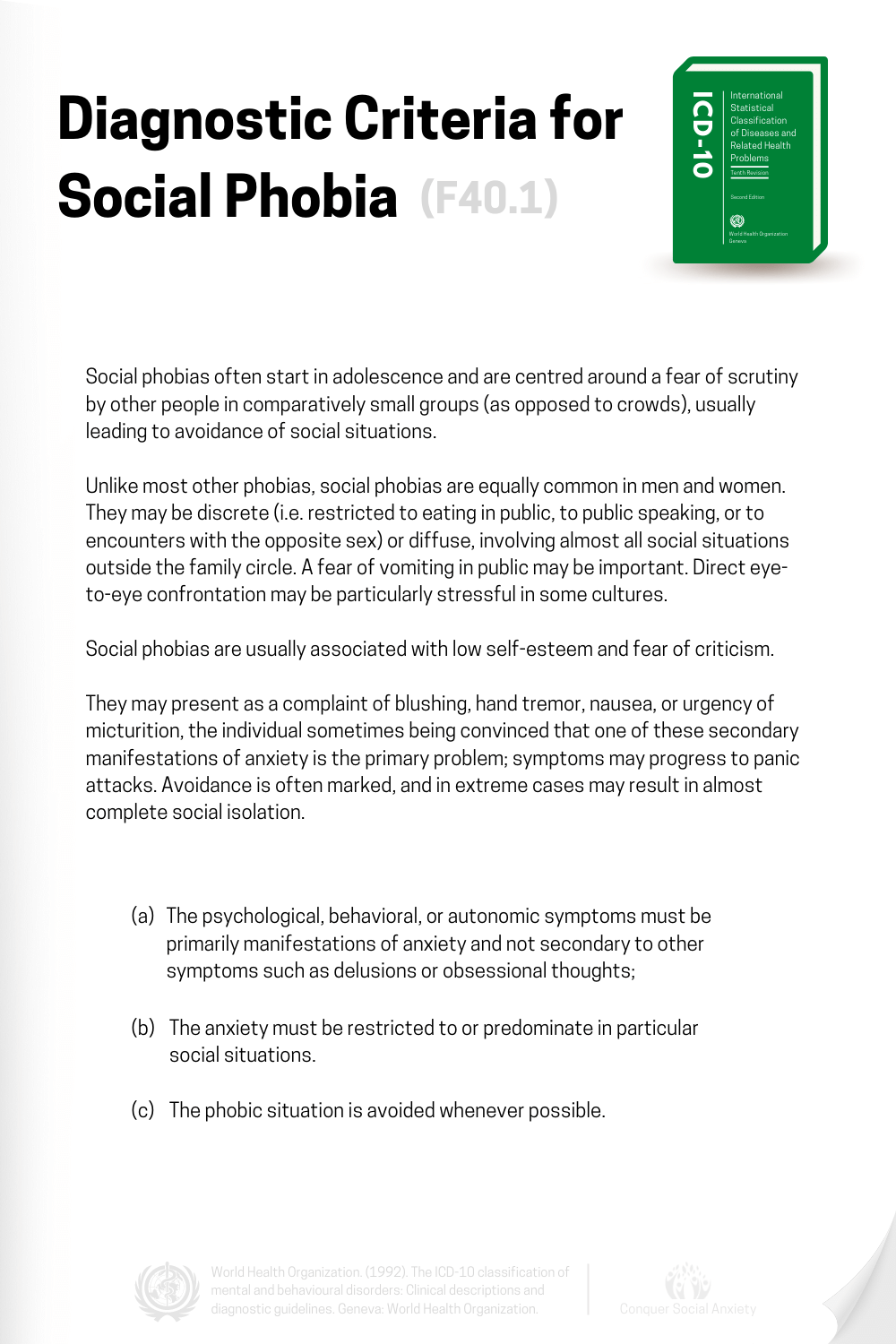
Last but not least, let’s see how the OPD-2 approaches the diagnosis of social anxiety disorder.
OPD-2 Diagnostic Criteria for Social Phobia
The Operationalized Psychodynamic Diagnosis (OPD) is a diagnostic and practical manual for psychotherapy. Unlike the previous two, this manual focuses on how to approach disorders from a psychotherapeutic standpoint and gives indications for potentially successful treatment.
As its name suggests, it is primarily used by psychodynamic therapists and is based on the principles of depth psychology, such as the unconscious as well as intra- and interpersonal conflicts.
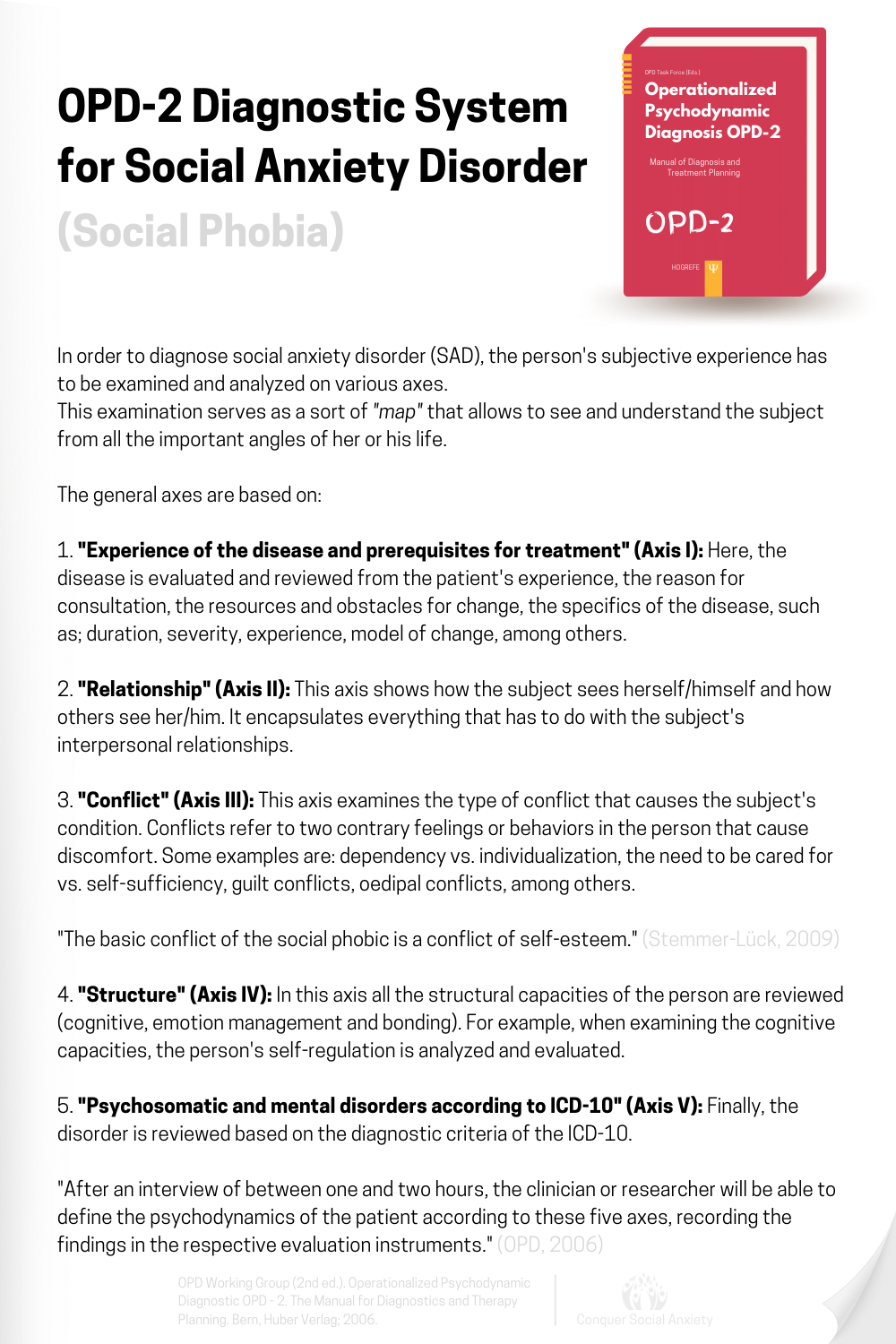
As you can see, this last manual is significantly different from the previous two, as is focusses primarily on the patient’s subjective experiences instead of objective checklists.
To learn more about the psychodynamic approach to SAD, we recommend you read our article on psychodynamic therapy for social anxiety.

Who Can Diagnose Social Anxiety?
In most countries, social anxiety disorder can be diagnosed by a regular physician, a psychiatrist, or a licensed psychologist. Psychologists should preferably have a clinical background. Mental health diagnoses must be administered by a qualified professional. Refrain from self-diagnosing.
Depending on your country (or State) of residence, this may differ. If you are not sure who to turn to, talk to your primary care physician.
With that said, there are a number of tests you can use to measure the extent of your social anxiety on your own. One such tool is the Self-Report Version of the Liebowitz Social Anxiety Scale. It is a short survey that takes about 10 minutes.
Signs That You May Have Social Anxiety
If you suspect that you have social phobia, but you are still unsure about whether or not your social fears are clinically significant, have a look at the following indications that may confirm your suspicion.
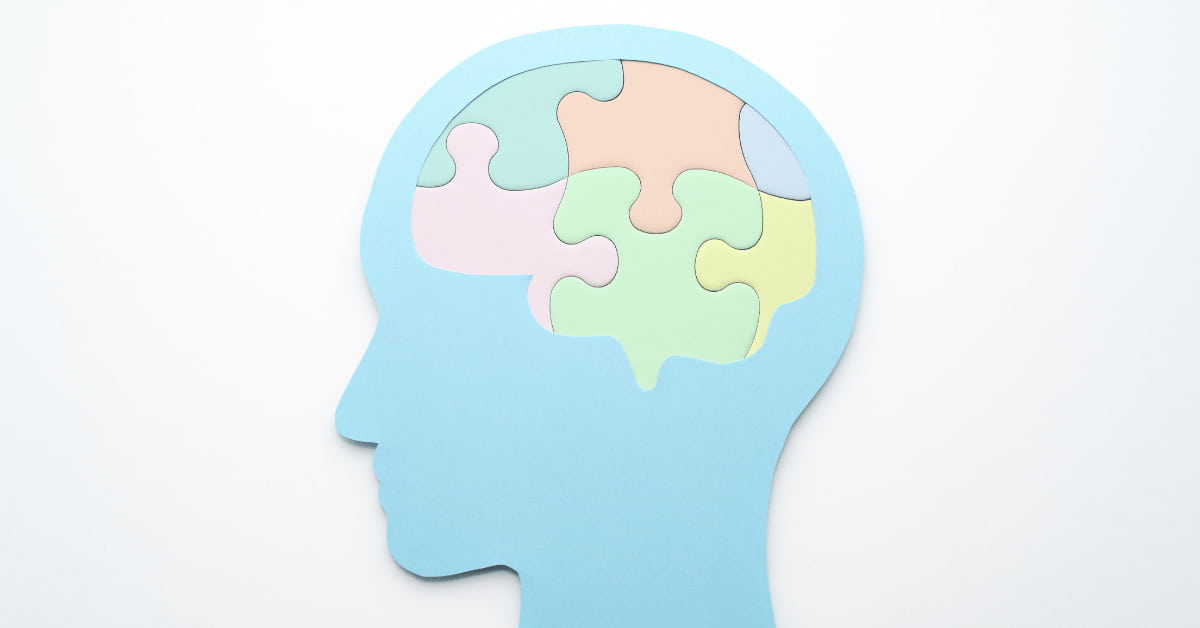
The following list depicts the most common signs of social anxiety:
- You worry a lot about what others may think of you.
- You avoid saying or doing things because you fear you will be judged or disliked.
- You are afraid of speaking in front of groups (note that this fear is very common, even among those without social phobia).
- You tend to be afraid of saying or doing something that could offend others, so you restrict your behavior.
- You dread being perceived as anxious or insecure.
- You are afraid of displaying visible/noticeable anxiety symptoms (such as blushing, sweating, trembling, a cracking voice, etc.).
- You are afraid of being ridiculed and you easily feel ashamed or humiliated.
- You worry a lot about what to say to others. Sometimes, you plan entire conversations.
- You often worry about making a fool of yourself in front of others (e.g., tripping or falling over).
- You worry excessively about breaking social norms.
- You are uncomfortable making and maintaining eye contact.
- You are very concerned about being unlikeable, seeming stupid, weird, or unacceptable to others.
- You get very nervous when interacting with a person you are attracted to.
- You feel highly uncomfortable when meeting strangers.
Note that these are just the most common examples and that most people identify with one or another of these symptoms, as they are normal human insecurities.
However, if you identify with numerous of these signs and you restrict your lifestyle because of it, chances are that you suffer from social anxiety disorder.
What to Do If You Think You Have Social Anxiety?
By now, you should have a pretty good idea of whether or not you have social phobia. So, what should you do if you think you are affected?
If you think you have social anxiety disorder (SAD), reach out to your primary care physician, a psychiatrist, or a clinical psychologist to verify your suspicion. SAD requires professional treatment. Inform yourself about treatment options and initiate therapy as soon as possible.
Feel free to poke around on our website, as we have put together a comprehensive compilation of helpful information. To find out more about viable treatment options, we invite you to read our complete therapy guide.

American Psychiatric Association. (2013). Diagnostic and statistical manual of mental disorders (5th ed.). Arlington, VA: American Psychiatric Publishing.
OPD Working Group (2nd ed.). Operationalized Psychodynamic Diagnostic OPD – 2. The Manual for Diagnostics and Therapy Planning. Bern, Huber Verlag; 2006.
Stemmer-Lück Magdalena. (2009). Verstehen und behandeln von psychischen Störungen psychodynamische Konzepte in der psychosozialen Praxis. Kohlhammer.
World Health Organization. (1992). The ICD-10 classification of mental and behavioural disorders: Clinical descriptions and diagnostic guidelines. Geneva: World Health Organization.
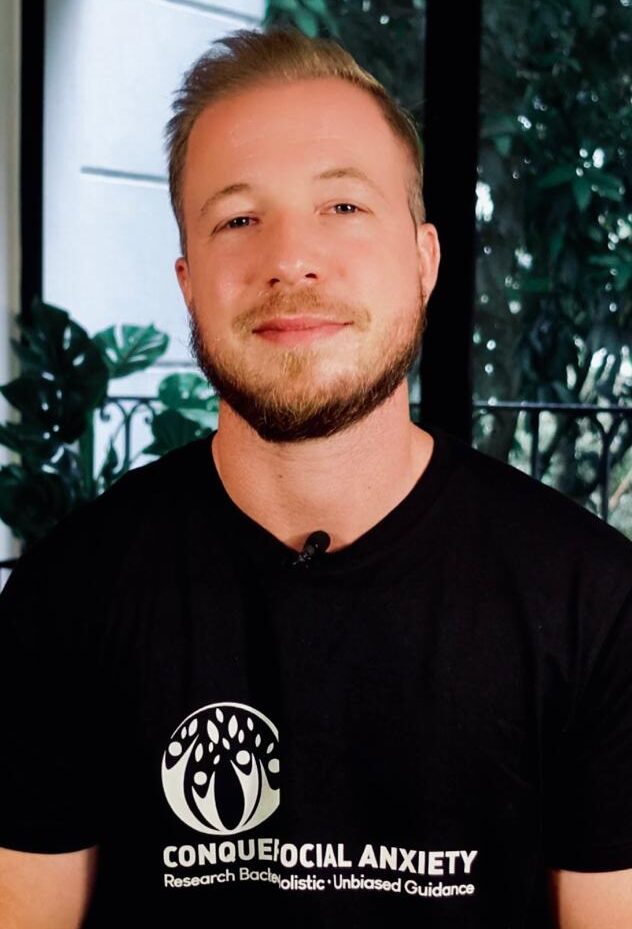
About the Author: Martin Stork
Martin is a professional psychologist with a background in physical therapy. He has organized and led various support groups for people with social anxiety in Washington, DC and Buenos Aires, Argentina. He is the founder of Conquer Social Anxiety Ltd, where he operates as a writer, therapist and director. You can click here to find out more about Martin.

